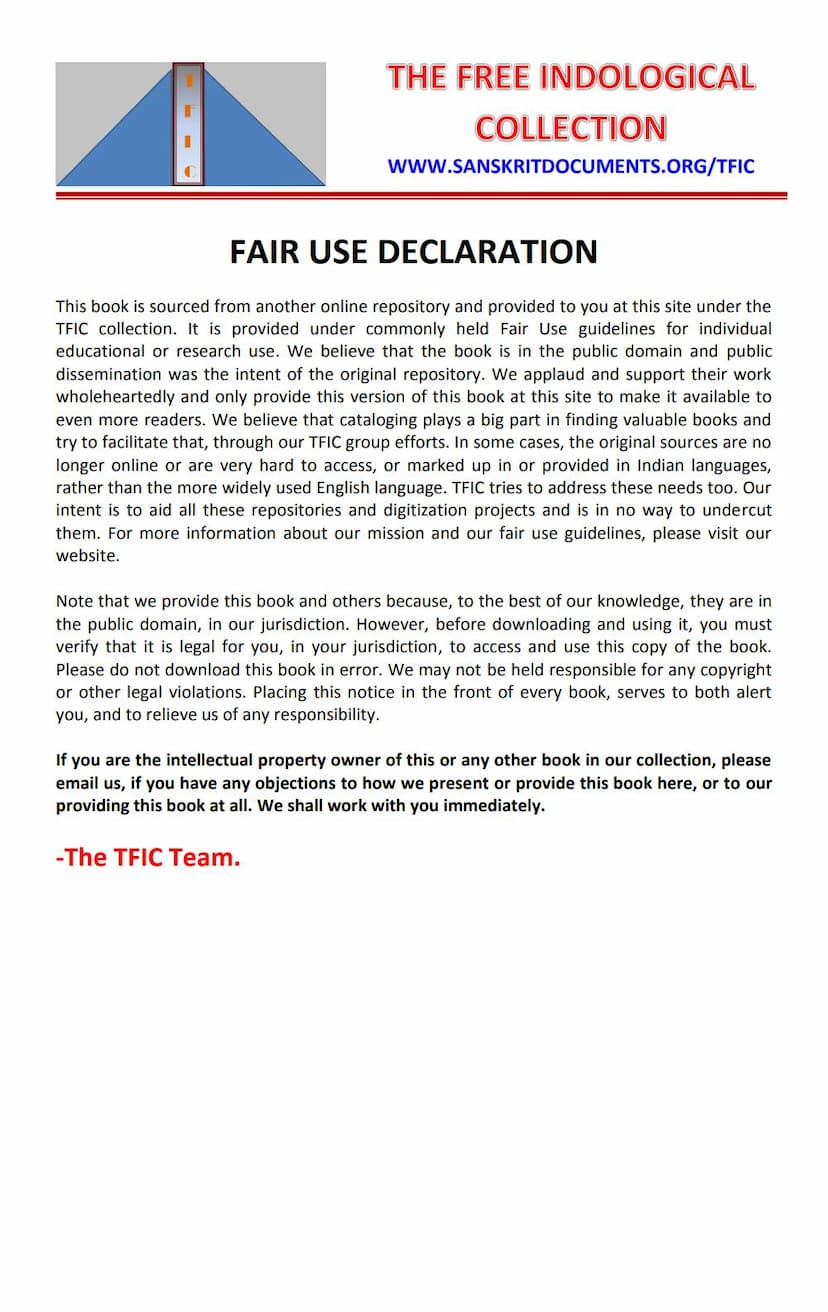Jainagam Stoak Sangraha
Added to library: September 2, 2025

Summary
This is a comprehensive summary of the Jain text "Jainagam Stoak Sangraha" by Maganlal Maharaj, based on the provided pages:
Book Title: Jainagam Stoak Sangraha (Collection of Jain Agamic Stanzas) Author: Late Pravartak Pandit Muni Shri Maganlal Ji Maharaj Saheb Publisher: Shri Jain Divakar Divya Jyoti Karyalay, Beawar Compiler: Late Pravartak Pandit Muni Shri Maganlal Ji Maharaj Saheb Commentator: Tapasvi Muni Shri Meghraj Ji Maharaj Saheb ("Jain Siddhant Prabhakar") Edition: Revised and Enlarged Second Edition, Year 2000
Overall Purpose and Significance:
"Jainagam Stoak Sangraha" is presented as a collection of "stoak" (stanzas or verses) derived from the vast ocean of Jain Agamas. These stoak are described as essential for those wishing to delve into the depths of Jain philosophy. A "stoak" is defined as a classification of knowledge based on a particular perspective or subject. The book aims to make this distilled wisdom, originating from foundational Jain scriptures like Bhagavati, Uttaradhyayana, Panvarna, Samavāyanga, and Sthānanga, accessible and beneficial to a wider audience.
Key Content Areas and Structure:
The book is organized into chapters covering a wide range of Jain philosophical and cosmological concepts. The table of contents (Anukramnika) on page 13 and 14 reveals the extensive scope of the collection, which includes:
-
Foundational Principles:
- Navatattva (Nine Universal Truths)
- Jivatattva (Soul/Living Being) and its various classifications (2 to 11, 12, 13, 14, 563 types)
- Ajiva Tattva (Non-living Matter) and its 54 and 560 types
- Karma Theory (Eight Karmas, their natures, bonds, and effects)
- Ashrav (Influx of Karma) and Samvar (Stoppage of Karma)
- Nirjara (Shedding of Karma) and Bandha (Bondage of Karma)
- Moksha (Liberation) and its means
-
Cosmology and Cosmology:
- Lok (Universe) and its structure (14 Rajus)
- Descriptions of Naraka (Hell realms), Bhavanapati (Earth-bound celestial beings), Vanavyantara (Inter-spatial celestial beings), Jyotishi (Luminous celestial beings), and Vaimanika (Vainika celestial beings).
-
Ethical and Spiritual Concepts:
- Gunasthan (Stages of Spiritual Progress)
- Pancha Indriya (Five Senses)
- Pancha Gyan (Five Types of Knowledge)
- Samyaktva (Right Faith/Perception) and its 67 principles.
- Brahmacharya (Celibacy) and its 32 analogies.
- Shravaka Dharma (Lay follower's principles and virtues - 21 virtues mentioned)
- Sadhu Samachari (Conduct of ascetics)
- Tapasya (Austerities - 12 types)
- Kashaya (Passions) and their classifications (4 types)
- Pudgal Paravarta (Transformation of matter)
- Gatagati Dwar (Cycle of birth and death)
- Charyavartana (Conduct related to actions)
- Nishkruti (Expiation/Penance)
- Shvasoshvas (Respiration)
- Avasthay (States of existence)
- Aupadhyay (Study/Teaching)
- Panchacharya (Five Acharyas)
- Dasa Dwara (Ten Categories of inquiry)
-
Specific Topics and Details:
- Garva Vichar (Concept of pregnancy)
- Nakshatra and Videsh Gaman (Stars and foreign travel)
- Pancha Deva (Five types of celestial beings)
- Aradhak Viradhak (Those who achieve and those who fail in spiritual practice)
- Tihajagarika (Three types of vigilance)
- Chhay Kay ke Bhav (Rebirths of beings in the Six Classes of Life)
- Avadhi Pad (Auspiciousness/Perfection)
- Dharma Dhyan (Righteous contemplation)
- Chhay Leshya (Six Types of Aura)
- Yoni Pad (Conception and Generation)
- Athma ka Vichar (Concept of the Soul)
- Vyavahar Samyakti ke 67 bol (67 principles of conventional Right Faith)
- Kaya Sthiti (Duration of Embodiment)
- Yoga ke Alpabautva (Relative quantities of different types of Yoga)
- Bala ke Alpabautva (Relative strength)
- Khanda Joyana (Description of the continent divisions)
- Dharma Samukh Hone ke 15 Karan (15 reasons to be inclined towards Dharma)
Key Themes and Approach:
- Systematic Classification: The book meticulously classifies Jain concepts, breaking them down into specific numbers of types, categories, or principles (e.g., Navatattva, 563 types of souls, 25 bolts, 8 karmas, 12 types of austerities, 6 classes of life). This systematic approach aims to provide a clear and structured understanding of complex doctrines.
- Emphasis on Knowledge and Practice: The text highlights the importance of both theoretical knowledge ("stoka gyan") and its practical application in achieving spiritual goals, particularly liberation (Moksha).
- Rooted in Agamas: The stoak are explicitly stated to be collected from authoritative Jain scriptures, lending them significant weight within the Jain tradition.
- Accessibility and Popularity: The book's popularity is evident from the mention of a Gujarati translation and the tradition of memorizing and quizzing on these stoak. The revised edition aims to further engage practice enthusiasts.
- Spiritual Guidance: The ultimate aim of understanding these principles is to foster spiritual growth, increase knowledge, and orient individuals towards the path of liberation.
Author and Context:
Maganlal Maharaj is presented as a respected spiritual figure whose work is being honored by this compilation. Tapasvi Meghraj Ji Maharaj Saheb is credited with inspiring and guiding the compilation of this revised and enlarged edition, indicating a continuity of Jain scholarly tradition. The publisher, Shri Jain Divakar Divya Jyoti Karyalay, suggests a focus on disseminating Jain religious and philosophical literature.
Fair Use Declaration:
The TFIC (The Free Indological Collection) declaration at the beginning emphasizes the book's availability for educational and research purposes under Fair Use guidelines, believing it to be in the public domain or with the original repository's intent for public dissemination.
In essence, "Jainagam Stoak Sangraha" serves as a pedagogical tool, offering a systematic and accessible compilation of essential Jain knowledge, making the vast wisdom of the Agamas comprehensible and actionable for seekers on the spiritual path.